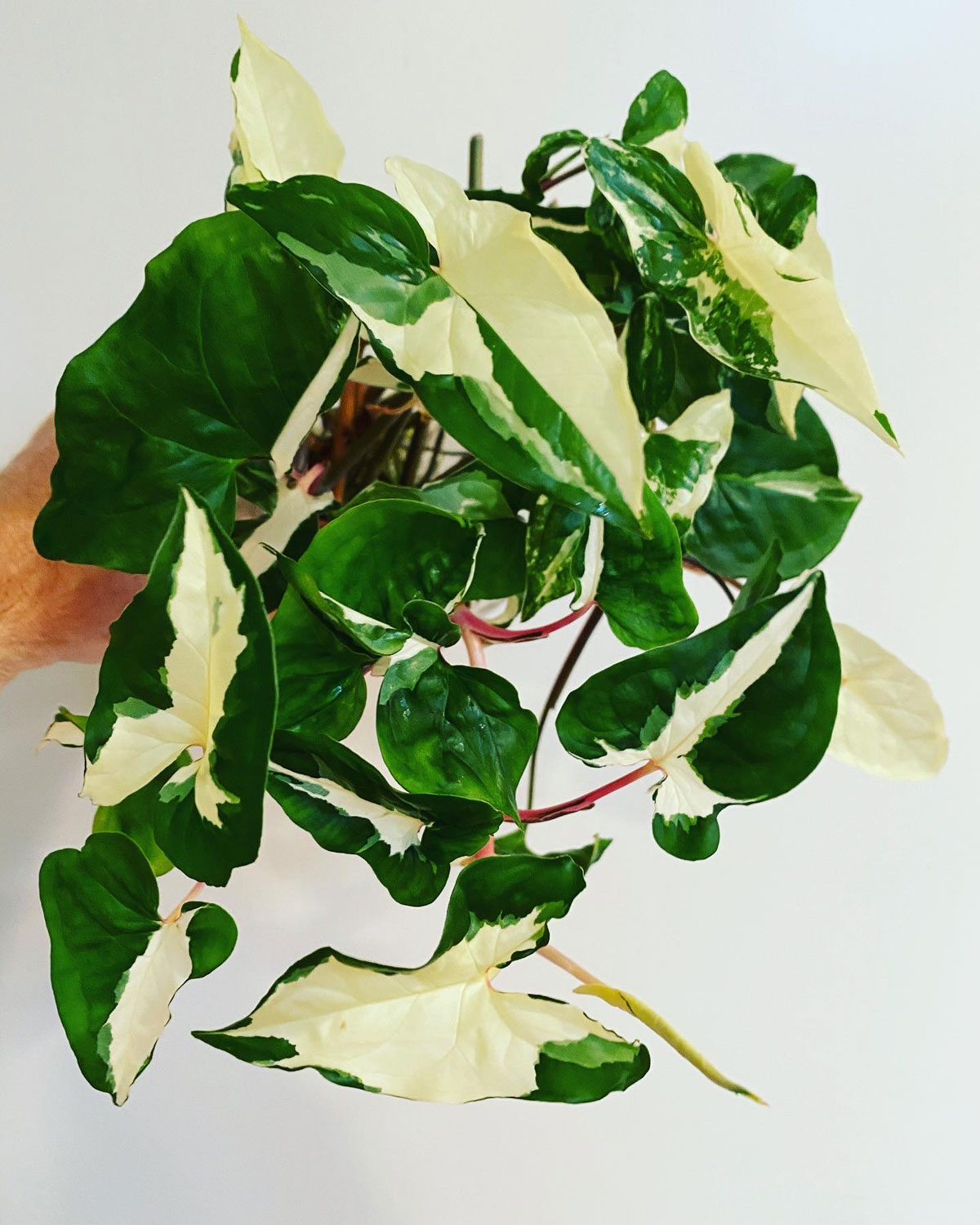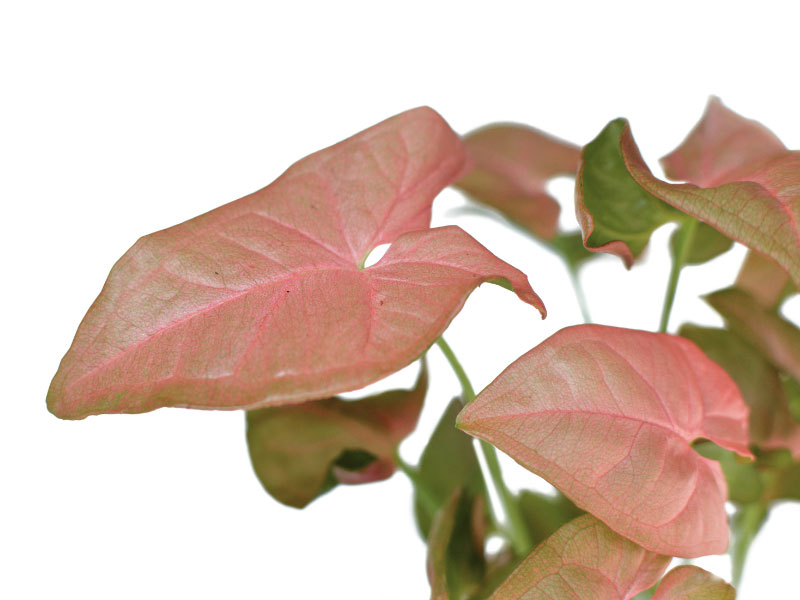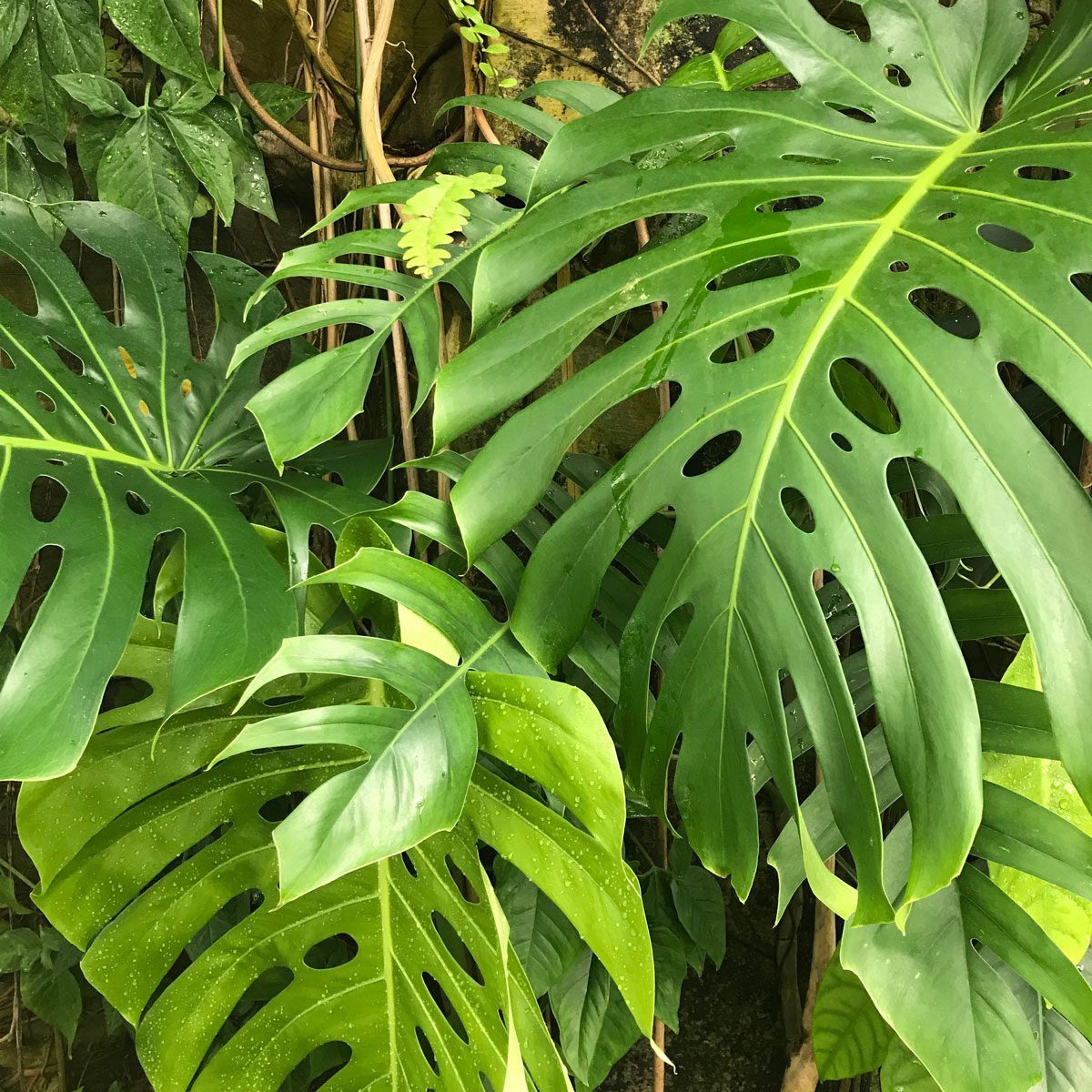Some of the links in this post may be affiliate links.
Are you looking for the best soil for Syngonium plants? Choosing the right potting mix is a crucial factor in helping your plant thrive, so keep reading to learn about 3 wonderful potting soil blends that you can use.

Table of Contents
BEST SOIL FOR SYNGONIUM
There are a number of potting mixes that you can use for your Syngonium plants, and this post contains 3 great ones that you can choose from.
Syngoniums belong to the Araceae family (aroid plant family) and need appropriately airy growing mediums to do their best.
Commonly known as Arrowhead plant, the native habitat of Syngonium podophyllum ranges from Mexico and throughout much of Central America and South America. These tropical plants make for wonderful indoor plants, and choosing the best potting mix is important.
1. My top recommendation is the Rainforest Soil Blend from Oh Happy Plants
2. DIY Mix with Perlite
3. DIY Aroid blend
These mixes are great for all Syngonium varieties including pink syngonium, white butterfly, Syngonium albo and more.
1. RAINFOREST SOIL BLEND

Hands down, the potting mixes from Oh Happy Plants are truly something special. I’ve been using their mixes for a long time now, and the difference in plant growth is incredible. You will not be disappointed.
Why mix your own, when someone has done all the work for you? Not only this, but it will be better than any mix that you can blend up yourself at home.
I believe in their mixes so much that I’ve developed a working relationship with Oh Happy Plants and I’m able to pass along a 10% discount automatically upon checkout if you use my Oh Happy Plants link below.
Why is the Rainforest Soil Blend so special for your Syngonium plants?
– This is a sustainable mix that uses no peat moss, and uses coco coir and coco chips instead.
– This blend is full of wonderful organic matter that is great for your Syngonium plants.
– It includes numerous seed meals and glacier rock dust which offer important nutrition for your Syngoniums.
– A mycorrhizal inoculant is included in this mix, and this helps to improve plant vigor and also increases disease resistance naturally.
– If you don’t like perlite, you’re in luck. Oh Happy Plants doesn’t use it!
– Charcoal and humates are used in order to encourage healthy roots.
– Even the bags and labels are compostable!
These mixes are very nutritious for your plants, and are developed to meet specific plants’ needs.
Another reason I love the Rainforest Soil Blend so much is that it will allow you to maintain a moist soil without having to worry about root rot. The mixes are developed to help mimic the soil in their natural habitat.
This is because the mix has amazing drainage and provides air to the root system, while still holding onto enough moisture at the same time.
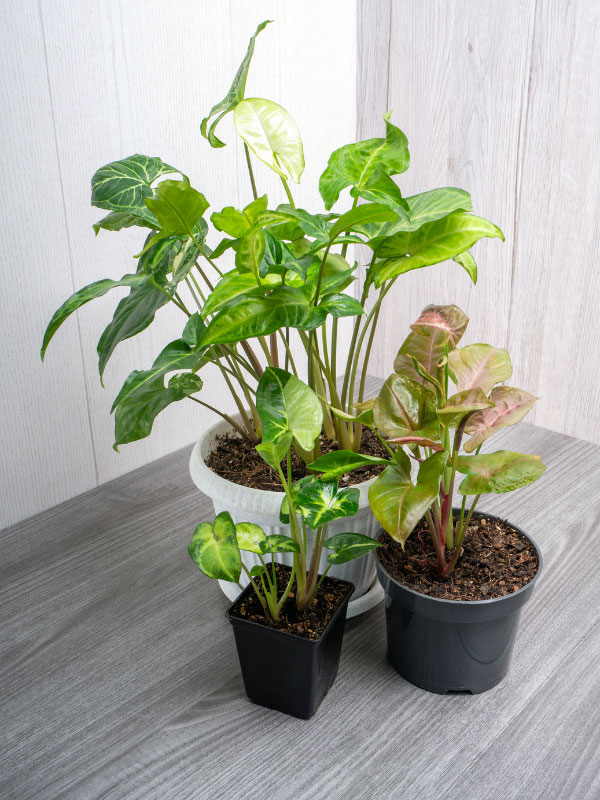
2. DIY MIX WITH PERLITE
I strongly suggest the Rainforest Soil Blend from Oh Happy Plants, but if you want to make a quick mix on your own, the following is a good mix that you can make in a pinch.
Other than the Oh Happy Plants mixes, most mixes on the market are not really ideal to use as-is. If you like to use mixes from Miracle-Gro or Espoma, these are great for indoors use, but they need a little help in order to improve drainage.
A good rule of thumb is to use about 3 parts of one of these mixes and add 1 part of perlite. This will help to create a well-drained soil for your Syngonium and also helps to supply more air to the root system of your plant.
3. DIY AROID BLEND
Lastly, if you want to get a little fancier, you can mix up 2 parts of an all-purpose potting mix, 1 part fine orchid bark, and 1 part perlite. This will result in a well-draining soil for these fast growers.
Remember that the chunkier the mix, the more quickly it will dry out, so you’ll need to be flexible with your watering.
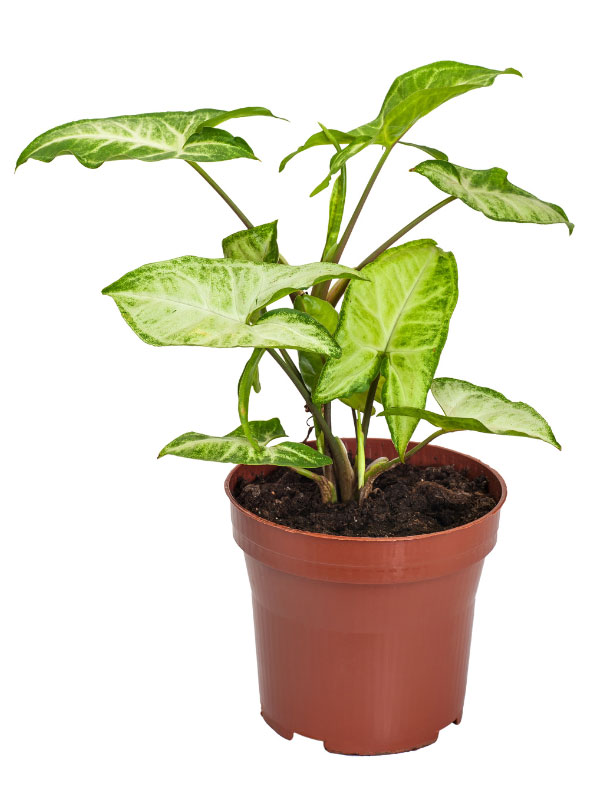
REPOTTING & CARE TIPS
When you take your root-bound Syngonium out of the pot, make sure that you loosen the roots up a bit before you place it in a larger pot. This will help your plant’s roots grow into the new potting mix more easily.
This is especially important if your plant is really root bound. It’s ok to break a couple roots. You will be doing your plant a good service and it will be better off in the long run.
WHEN TO REPOT
Although you can repot your Syngonium anytime, the best time to repot is at the beginning of the growing season in late winter or early spring, but anytime during the summer months is great too.
My best advice is to just avoid repotting during the winter months when growth is really slow or has come to a halt, particularly for those of us that live in areas with short, dark days in the winter time.
TYPES OF POT
Always use pots with drainage holes so that excess water can escape.
As far as types of pots, terra cotta pots will dry out much more quickly than other types of pots because of the porosity of the material. Pot type can make a big difference in how quickly the soil dries out.
POT SIZE
As far as pot size, only go up one pot size when you repot. If your plant is in a 6 inch diameter pot, move it up to an 8 inch diameter pot.
Plant roots like to remain somewhat constrained, but if you go too large, the excess potting mix will take too long to dry out and potentially cause you some issues.
Small pots will dry out much more quickly than larger pots, so be flexible with your watering. Don’t use a strict schedule when determining when to water your arrowhead vine plants.
WHEN TO WATER
As a general rule of thumb for watering, wait for the top inch of soil to dry out before watering again thoroughly.
Some mixes dry out faster than others, so just use your finger to judge the soil moisture. I strongly advise against using moisture meters because most of the inexpensive ones that are available are junky and provide faulty readings.
Make sure you don’t allow your Syngonium’s soil to dry out completely otherwise you will start to see yellow leaves at the base of the plant.
MOSS POLE
Syngonium plants are vigorous vines in nature. If you don’t give them a support, they will just act as trailing vines in your pot.
Syngoniums are actually a climbing plant in nature. They will scramble on the forest floor until they reach a tree, and then will use their aerial roots to start attaching to a tree trunk and grow up the tree.
If you’d like to add a moss pole for your plant to climb on, the ideal time to add one is when you repot. I’ve written a DIY moss pole tutorial so you can make your own. It will be superior to anything that you can buy!
I hope you’ve enjoyed this post on best soil for Syngonium. For more details on the care of these plants, check out my Syngonium care tips post which includes care tips on light, fertilization, temperature, humidity, propagation, and more.

